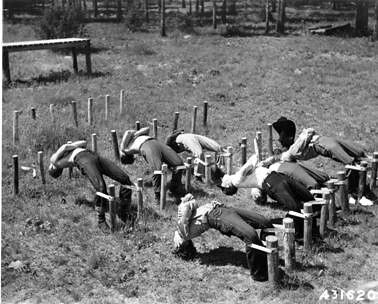Jumping out of planes via parachutes to put out remote wildland forest fires isn’t your typical American job and it isn’t for the faint of heart. Since 1939, the technique called smoke jumping has attracted physically fit, courageous and adventurous firefighters and has helped keep communities safe.
By the 1940s, the smoke jumping program was a valuable asset to the U.S. Forest Service. Unfortunately, with the country’s men drafted during World War II, the Forest Service experienced a significant loss in federal personnel which impacted the fire program.
To help offset the loss of personnel, the Civilian Public Service program provided conscientious objectors a legal alternative to military service by giving them the opportunity to serve as smoke jumpers.

These smoke jumpers, who were paid $5 per month, undertook work ordinarily accomplished by federal employees, primarily through camps administered by the Quaker, Brethren, Mennonite and Religious Society of Friends historic peace church organizations. This unusual church-state partnership afforded more than 12,000 men the opportunity to perform “work of national importance,” but not as combatants.
In 1943, 60 conscientious objectors were chosen from a pool of over 300 volunteers. By 1946, the camp disbanded and the men returned to their families and their lives from before the war. Without the service of these men, the Forest Service would have likely had to discontinue the smoke jumping program during the war years.
In highlighting this novel program, Archivist Lemperlé explored the valiancy of these men during a presentation last month on The Role of Conscientious Objectors in Smoke Jumping during World War II at the Montana Historical Society’s 38th annual Montana History Conference in Missoula, Mont.
